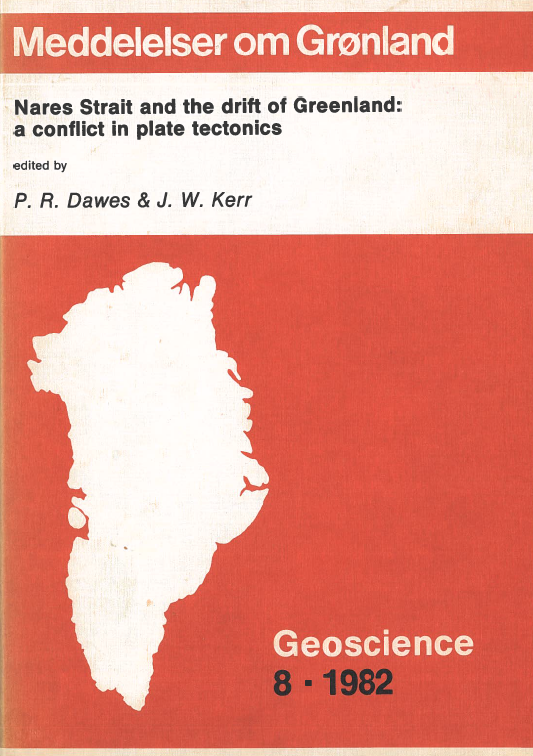Cretaceous-Tertiary magmatic and tectonic events in North Greenland and the history of adjacent ocean basins
DOI:
https://doi.org/10.7146/moggeosci.v8i.139582Abstract
Greenland emerged as a separate entity during the break-up of the Laurasian plate in Palaeogene time. Research in the last decade has revealed some of the magmatic and tectonic events which were associated with the development of Greenland's northern margin: late Cretaceous basic dyke swarms, an explosive volcanic province (Kap Washington Group) dated as end-Cretaceous, a thrust zone of late Paleocene - Eocene age and a later Tertiary period of fault reactivation related to regional uplift. The north-eastern (Wandel Sea) margin was affected by compressional and extensional deformations.
The evidence for this sequence of events is outlined together with chemical data which characterise the igneous activity as alkalic, of ‘within-plate' type. A coherent pattern can be discerned between the onshore geological history and the spreading history of adjacent ocean basins, when the revised polarity time scale of Hailwood et al. (1979) is used as a link. We show how the geological evidence from North Greenland provides a number of important constraints on the timing and magnitude of displacements between Greenland and Canada in the Labrador Sea and Baffin Bay and also along Nares Strait.
Downloads
Published
How to Cite
Issue
Section
License
Coypyright by the authors and the Commision for Scientific Research in Greenland / Danish Polar Center. No parts of the publications may be reproduced in any form without the written permission by the copyright owners.


